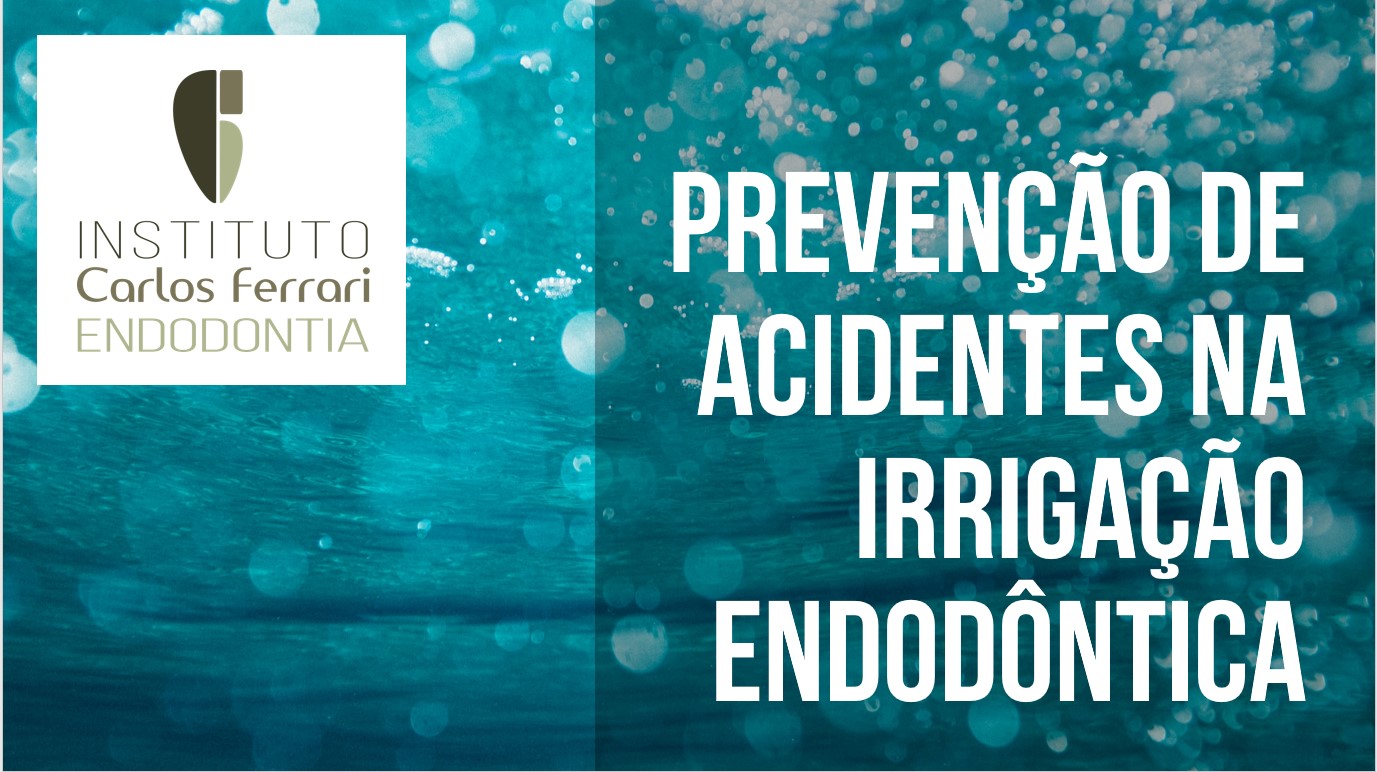Prevenção de acidentes na irrigação endodôntica
Principais medidas locais e gerais, para prevenção dos acidentes e complicações durante a irrigação endodôntica.
In: Abra et al. Revista Ibero-Americana de Humanidades, Ciências e Educação-REASE. Revista Ibero-Americana de Humanidades, Ciências e Educação. São Paulo, v.8.n.03.mar. 2022.
INTRODUÇÃO O hipoclorito de sódio (NaOCl) foi reconhecido pela primeira vez como agente antibacteriano em 1843; a lavagem das mãos com solução de hipoclorito entre os pacientes produziu taxas de transmissão de infecção anormalmente baixas. O irrigante atualmente mais utilizado é o hipoclorito de sódio (NaOCl). Este foi indicado pela primeira vez como uma solução antisséptica por Dakin, em 1915, para limpeza e desinfecção das feridas dos soldados da I Guerra Mundial, e agora é de uso comum em todo o mundo(BORRIN et al., 2020).Posteriormente o seu uso difundiu-se a outras áreas, especialmente na irrigação de canais radiculares.
Tal substância é encontrada nas concentrações de 0,5% a 5,25% e apresenta importantes propriedades, como ação antimicrobiana, poder de dissolução de matéria orgânica e capacidade desodorizante(GRAÇA, 2014). O NaOCl é usado como irrigante endodôntico porque é um antimicrobiano eficaz e possui capacidade de dissolução tecidual. Possui baixa viscosidade, permitindo a fácil introdução na arquitetura do canal, vida útil aceitável, prontamente disponível e barato. A toxicidade de sua ação nos tecidos vitais e a corrosão de metais constituem suas principais desvantagens no uso odontológico(SALUM et al., 2012).O hipoclorito de sódio reage com ácidos graxos e aminoácidos na polpa dentária, resultando na liquefação dos tecidos orgânicos.
Não existe uma concentração universalmente aceita de hipoclorito de sódio para uso como irrigante endodôntico. A ação dissolvente do hipoclorito em bactérias e tecidos aumenta com sua concentração, mas é acompanhada por um aumento na toxicidade. As concentrações utilizadas variam em 5,25% dependendo dos protocolos de diluição e armazenamento de cada profissional. Aquecedores de solução estão disponíveis para elevar a temperatura para 60°C. Aumentar a temperatura de uma solução de hipoclorito aumenta a atividade bactericida e de dissolução da polpa, embora o efeito da transferência de calor nos tecidos adjacentes seja incerto(FREITAS et al., 2020).Em altas concentrações, o NaOCl causa hemólise, ulceração, inibição da migração de neutrófilos, dano ao e células fibroblásticas, fraqueza do nervo facial e necrose após extrusão durante o tratamento endodôntico.
Como agente branqueador, o derramamento acidental deste agente pode danificar roupas e tecidos moles. A introdução acidental de hipoclorito de sódio além do sistema ductal pode resultar em danos extensos nos tecidos moles ou nos nervos e até mesmo danos nas vias aéreas. Dessa forma, a profundidade com que a cânula de irrigação penetra no canal, o volume e a frequência da irrigação são aspectos que influenciam na competência do agente irrigante(SOARES et al., 2007).Apesar de possíveis acidentes e complicações, pode-se dizer que o hipoclorito de sódio (NaOCl) representa o “padrão ouro” para irrigação endodôntica.A irrigação do canal radicular é uma sequência chave no sucesso do tratamento endodôntico. Devido às suas propriedades antimicrobianas e biológicas de dissolução do tecido, o hipoclorito de sódio (NaOCl) é o irrigante mais eficaz e naturalmente o mais utilizado(TRAVASSOS et al., 2020).
Prevenção de acidentes na irrigação endodôntica





